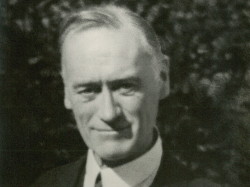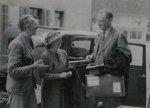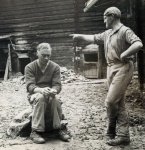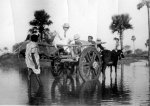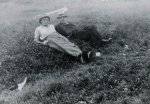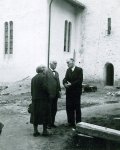Pierre Ceresole
Pierre Ceresole was born in 1879 in Lausanne. His family was wealthy and his father was for some time the president of the Swiss Federal Council. Pierre was gifted and was given a good education. He studied mathematics with a plan of becoming an engineer and was expected to make a brilliant career. However, he was neither attracted by money nor position. He gave the money he inherited from his father to the State, because he did not think he deserved it.
Pierre's interests in people took him out on a long journey in 1910. He went to the USA, where after some time he got the idea of continuing around the world. But first he had to earn some more money. He tried many different jobs. Amongst other things he worked as a gravedigger, using a pick and shovel for the first time. These tools were to become very important in his life.
Via Hawaii Pierre went to Japan, where he worked as an engineer for two years. At the outbreak of war in August 1914 he returned to Switzerland. He was shaken by what he saw of the war. The misery and madness of war became more and more clear to him. He thought it was particularly appalling that Christians allowed themselves to be used for the war, thus making the nation-state into an idol. He realised that he must join the Christian Conscientious Objectors, who opposed all forms of service in the army. In 1917 he refused to pay defence tax and made public his decision, ascribing it to his Christian conscience. Pierre knew that this would ruin his career and send him to prison. He was to be imprisoned at least ten times during the rest of his life. In 1919 Pierre gave up his career as an engineer to devote himself entirely to peace work.
The Quakers, with their whole-hearted pacifism and their practical contribution to peace, introduced Pierre to constructive peace work. He realised that the young, who had previously been trained for destruction, must be recruited for peace instead.
Pierre's ideas soon materialised. He went to Esnes near Verdun to initiate civil service work in a devastated area which had been a battle-field a few years earlier. With him were some German and Austrian pacifists who were eager to work in France as a form of compensation. English, Dutch and Swiss volunteers joined them. Together they cleared the debris of the war and built new houses. Their five months of hard work and simple life taught Pierre what he called "peace work technique".
The next time Pierre assembled volunteers from different countries was to help in Switzerland, where avalanches had caused severe damage. This project was successful and afterwards more work waited. The number of volunteers kept increasing.
In 1928 700 volunteers from 17 countries joined in the reconstruction work in Liechtenstein after the Rhinefloods. Between 1929 and 1938 32 workcamps were held in France, England and Switzerland alone.
From 1934 to 1937 Pierre and three others were active in India. In the aftermath of earthquakes they worked as "diplomats, architects, bricklayers and labourers", helping hundreds of farmers. It was in India that Pierre joined the Quakers.
During World War II Pierre attempted to enter Germany illegally in order to confront the German leaders and persuade them to end the war. He was captured and put in prison. Shortly after his release he died. Before Pierre Ceresole's death, however, the war came to an end and his creation, Service civil International, which has served as a model for other rganisations, was revived.



